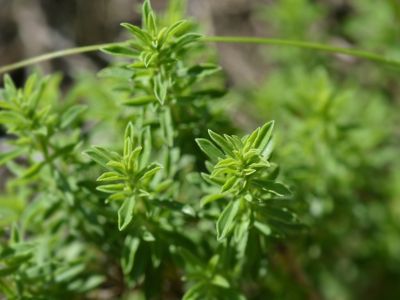Winter Savory Plant Info
Winter savory (Satureja montana) is an herbaceous, perennial hardy to USDA zone 6 while summer savory is grown as an annual. The ancient Roman writer, Pliny, named the genus ‘Satureja,’ which is derived from the word “satyr,” a half goat and half man mythological being who reveled in all savory delights. It was these ancient Romans that introduced the herb to England around the time of Caesar’s reign. Both winter and summer savory have a strong peppery flavor, although winter savory has a more pungent flavor than summer. Both herbs can be used in a variety of foods and help to enliven flavor without the use of additional salt and pepper. For this reason, winter savory herbs are often paired with beans during cooking since the addition of salt at that time would toughen the beans. Savory is not only used in a variety of culinary preparations but the dried leaves are often added to potpourri. The fresh or dried leaves can also be used to infuse vinegar, herb butters, or steeped for tea.
How to Grow Winter Savory
Winter savory is a hardy semi-evergreen bush with glossy, dark green leaves and woody stems. It is easy to grow and, once established, care of winter savory is nominal. It can be used as a border plant in the herb garden or planted as a companion plant along with beans where it is said that growing winter savory keeps bean weevils away. Winter savory is also planted near roses where it is purported to reduce mildew and aphid infestations. This herb gets from 6-12 inches (15 to 30.5 cm.) in height and 8-12 inches (20.5 to 30.5 cm.) across. Like most herbs, it thrives in full sun for at least six hours per day in well-draining soil with a pH of 6.7. Sow seeds in the spring in flats to transplant outdoors once the soil warms; transplant seedlings 10-12 inches (25.5 to 30.5 cm.) apart in the garden. Winter savory can also be propagated via cuttings. Take cuttings, the tips of new shoots, in late spring and place them in pots of wet sand. When the cuttings root, transplant them to the garden or into another container. Harvest winter savory in the morning when the essential oils are at their most potent. It can then be dried or used fresh. In temperate climates, winter savory will go dormant in the winter and put out new leaves in the spring. Older plants tend to get woody, so keep them pruned out to encourage new growth.
